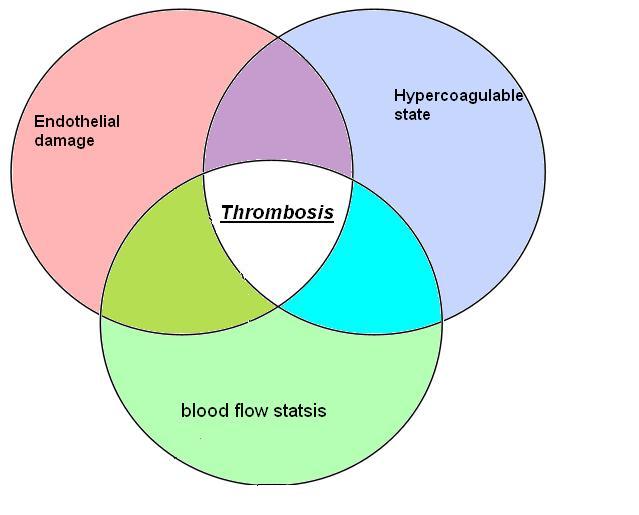Pulmonary embolism risk factors: Difference between revisions
(/* Risk Factors from the Nurses' Health Study{{cite journal| author=Goldhaber SZ, Grodstein F, Stampfer MJ, Manson JE, Colditz GA, Speizer FE et al.| title=A prospective study of risk factors for pulmonary embolism in women. | journal=JAMA | year=...) |
|||
| Line 92: | Line 92: | ||
==References== | ==References== | ||
{{reflist|2}} | {{reflist|2}} | ||
[[Category:Hematology]] | [[Category:Hematology]] | ||
| Line 98: | Line 99: | ||
[[Category:Emergency medicine]] | [[Category:Emergency medicine]] | ||
[[Category:Intensive care medicine]] | [[Category:Intensive care medicine]] | ||
[[Category:Primary care]] | |||
{{WH}} | {{WH}} | ||
{{WS}} | {{WS}} | ||
Revision as of 16:11, 11 February 2013
|
Pulmonary Embolism Microchapters |
|
Diagnosis |
|---|
|
Pulmonary Embolism Assessment of Probability of Subsequent VTE and Risk Scores |
|
Treatment |
|
Follow-Up |
|
Special Scenario |
|
Trials |
|
Case Studies |
|
Pulmonary embolism risk factors On the Web |
|
Directions to Hospitals Treating Pulmonary embolism risk factors |
|
Risk calculators and risk factors for Pulmonary embolism risk factors |
Editor(s)-In-Chief: C. Michael Gibson, M.S., M.D. [1], The APEX Trial Investigators; Associate Editor(s)-in-Chief: Cafer Zorkun, M.D., Ph.D. [2]
Overview
The most common sources of pulmonary emboli are proximal leg deep venous thromboses (DVTs) or pelvic vein thromboses. Any risk factor for DVT also increases the risk of pulmonary embolism, and therefore DVT and PE are considered to be a continuum termed venous thromboembolism (VTE). Approximately 15% of patients with a DVT will develop a pulmonary embolus. Smoking, estrogen-containing hormonal contraceptives, and immobilization (including long distance travel) are common risk factors.
Risk Factors
The development of thrombosis is classically due to a group of causes referred to as Virchow's triad. Virchow's triad includes alterations in blood flow, factors in the vessel wall, and factors affecting the properties of the blood. It is common for more than one risk factor to be present.
Figure: Virchow's triad encompasses three broad categories of factors that are thought to contribute to venous thrombosis.
Medical conditions included in the triad are:
- Alterations in blood flow: Alterations in blood flow can be caused by some of the following conditions:
- Pregnancy which is a pro-coagulant
- Obesity which is also a pro-coagulant
- Being immobile for long periods of time. The immobilizations include:
- After a surgery
- Injury
- Long-distance air travel
- Factors in the vessel wall:
- This is of limited direct relevance in VTE
- Factors affecting the properties of the blood (pro-coagulant state):
- Estrogen-containing hormonal contraception
- Genetic thrombophilias which include:
- Factor V Leiden
- Prothrombin mutation G20210A
- Protein C deficiency
- protein S deficiency
- Antithrombin deficiency
- Hyperhomocysteinemia
- Plasminogen/Fibrinolysis disorders
- Acquired thrombophilias which include:
Risk Factors Identified in the PIOPED Study[1]
Independent risk factors identified in prospective investigation of pulmonary embolism diagnosis (PIOPED) include:
- Immobilization, paresis, or paralysis
- Travel of 4 hours or more in the past month would be considered an immobilization.
- Surgery within the last 3 months or having suffered a stroke.
- These may have a connection to immobilization.
- History of venous thromboembolism.
- Malignancies, especially lung cancer.
- Malignancies have been found in up to 17% of patients with an idiopathic deep vein thrombosis (DVT).
- Current or past history of thrombophlebitis.
- Trauma to the lower extremities or pelvis during the past 3 months.
- Smoking
- Central venous instrumentation within the past 3 months
- Prior pulmonary embolism
- Heart failure
- Chronic obstructive pulmonary disease
Risk Factors from the Nurse's Health Study[2]
- Obesity: RR (relative risk) 2.9
- Smoking:
- 25 – 34 cigarettes per day (RR 1.9)
- More than 35 cigarettes per day (RR 3.3)
- Hypertension: RR 1.9
- Oral contraceptives: RR approximately 2 – 3
- Hormone replacement therapy: RR approximately 2
Risk Factors from the Physician's Health Study[3]
- Anticardiolipin antibody level above the 95th percentile. [4].
- Factor V Leiden
- RR 2.7, found in 40% of patients with idiopathic DVT.
- Use of oral contraceptives by a person with the Factor V mutation increases the risk of venous thromboembolism by about 35 times.
- Hyperhomocysteinemia increases the risk of a DVT by a factor of 3.
- Hyperhomocysteinemia in association with Factor V increases the risk of a DVT by about 10 times.
- Lupus anticoagulant was found in 8.5% of patients with idiopathic DVT.
Other Risk Factors Include:
- Acute medical illness
- Drug abuse (intravenous [IV] drugs)
- Hemolytic anemias
- Homocystinuria
- Hypercoagulable states, which can be caused by hereditary factors.
- Hyperlipidemias
- Inflammatory bowel disease
- Phenothiazines
- Pregnancy
- Thrombocytosis
- Varicose veins
- Venography
- Venous pacemakers
- Venous stasis
- Warfarin (first few days of therapy)
References
- ↑ Worsley DF, Alavi A (1995). "Comprehensive analysis of the results of the PIOPED Study. Prospective Investigation of Pulmonary Embolism Diagnosis Study". J Nucl Med. 36 (12): 2380–7. PMID 8523135.
- ↑ Goldhaber SZ, Grodstein F, Stampfer MJ, Manson JE, Colditz GA, Speizer FE; et al. (1997). "A prospective study of risk factors for pulmonary embolism in women". JAMA. 277 (8): 642–5. PMID 9039882.
- ↑ Ridker PM, Hennekens CH, Lindpaintner K, Stampfer MJ, Eisenberg PR, Miletich JP (1995). "Mutation in the gene coding for coagulation factor V and the risk of myocardial infarction, stroke, and venous thrombosis in apparently healthy men". N Engl J Med. 332 (14): 912–7. doi:10.1056/NEJM199504063321403. PMID 7877648.
- ↑ Ginsburg KS, Liang MH, Newcomer L, Goldhaber SZ, Schur PH, Hennekens CH; et al. (1992). "Anticardiolipin antibodies and the risk for ischemic stroke and venous thrombosis". Ann Intern Med. 117 (12): 997–1002. PMID 1443986.
